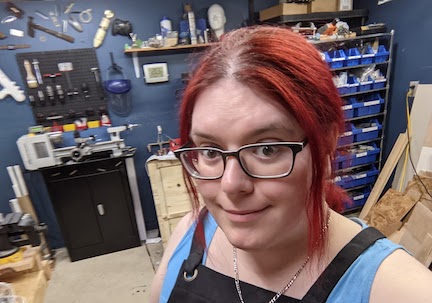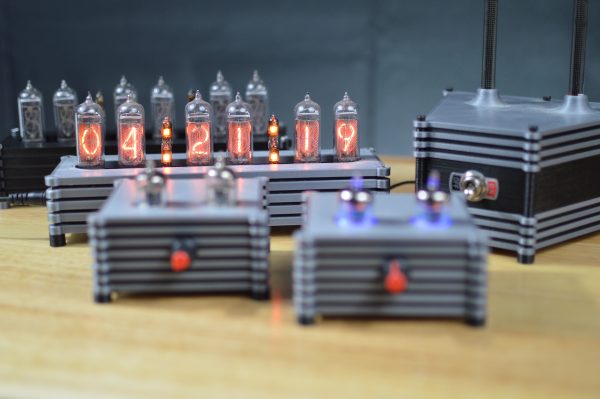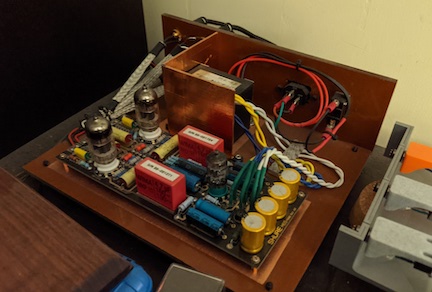
Candice Wilson is a solutions architect and Jira project manager for HITS. Her childhood passion for tech and love of creating led to an exciting career at Michigan Medicine where each day offers opportunities to solve new problems. Candice’s interest in making things extends beyond her work at the university and can be viewed in her hobbies — from 3D printing to cooking and more. She particularly enjoys creating things to gift to others.
Tell me about your role as a solutions architect and Jira project manager. What does your typical day involve?
Being a solutions architect on the DevOps team is a role of continuously varied work. Because of the way we engineer our solutions, I have to be familiar with networking infrastructure, programming, and deployment management. Sometimes I work directly with customers.
My typical day might find me doing everything from pulling reports for someone from one of my systems, to updating code in one of our repositories for a new deployment, to being a subject matter expert in a meeting to give information on how Kubernetes infrastructure works. I couldn’t tell you what I’m going to do the next day, which is exciting, because it keeps me on my toes.
What is one highlight of your job?
One of the things that I really like about working on the DevOps team at Michigan Medicine is that we’re often tasked with going first with new software. It’s always exciting to get into a new tool and learn and explore it. I like the fact that my job forces me to keep learning and stay on the cutting edge of technology to be able to embrace it, implement it, and make it work for our end users.
Are there any recent projects that you’ve worked on that you’re especially proud of?
Yes! The JIRA Cloud migration project. About eight months ago, we put it into production and we’ve been enjoying the benefits of it since.
With this project, we moved all of our Jira infrastructure from a third-party host into Google Cloud. It was a very large transition, and it wasn’t just moving software from one server to another. We completely changed the technology and switched from using traditional virtual machine hosting to a containerized infrastructure hosted on a piece of technology called Kubernetes. The container is a piece of software, and its operating system reduces down to the minimum number of components needed to run it in a package that allows us to quickly perform upgrades and changes. It’s very easy to restart and to scale up or down if we need additional resources for it.
The reliability improved dramatically. We haven’t had a single unplanned outage since last November when we finished the migration. Performance has been better for our end users and everything’s so fast. Best of all, we’ve been able to cut hosting costs significantly, by over 55%
How did you enter the tech field? Were you always interested in technology?
I was definitely into tech very early. As soon as I could read, my parents bought me a computer: a Compaq Desk Pro. I fell in love with it and decided that technology was the road I was going to go down. My first job was working at a pathology laboratory, being a desktop support technician, at 15 years old.
I did some contracting for a bit after that. In 2003, I joined the University of Michigan at the hospital system’s Help Desk and I bounced around to a lot of positions: I was a business analyst for a while, I worked in network security and the Technical Operations Services (TOS) team, then I worked on the North Campus Data Center project. I also worked in QA, and I’ve been in DevOps since 2018.
What advice would you give to someone who wanted to work in the tech field?
If someone asks you to try something, to attempt to fix something, to jump into a new technology, to try a new job: say ‘yes’ as often as you can. The best things that have come out of my career happened when I took a leap of faith.
Always be curious about new technology, even if it’s just reading about it. And tinker. Tinker like your life depends on it. Break it, fix it, break it again. Experiment and get comfortable with technology so it can start to become second nature.
You’re a self-identified maker, constructive artist, and automotive enthusiast who enjoys 3D printing and CNC (computer numerical control). What draws you to those hobbies?
I love making things. I love to build things both in an artistic capacity, sometimes in a practical capacity, and that’s one of the things that drew me to 3D printing. It’s almost the dream of the replicator to take a drawing that you’ve made in the digital realm and then make it into a physical object directly.
Working in IT, everything I do is impermanent. It’s all just ones and zeros in the ether. There’s nothing that I make today that will be around for more than five or six years, so taking the time to create something physical helps to fill that need to create something that you can touch. Because you can’t touch software, as wonderful as it is. You can’t put your hands on it. You can’t feel it. You can’t give it to somebody. Those physical representations of one’s creativity are very important to me.
Is there anything we didn’t talk about that you’d like to add?
I am a queer trans woman. It’s something I talked about in an interview I did recently with Shanelle Boluyt, a solution architect with HITS. It’s been very interesting over the last few years of the transition to re-establish relationships and handle that as a professional. I think the university does a good job of being supportive of folks like myself, but it’s been quite an adventure. I wanted to mention that because I’m very much about transparency and in general, being honest. If we can’t be honest with ourselves and with others, what is there?





